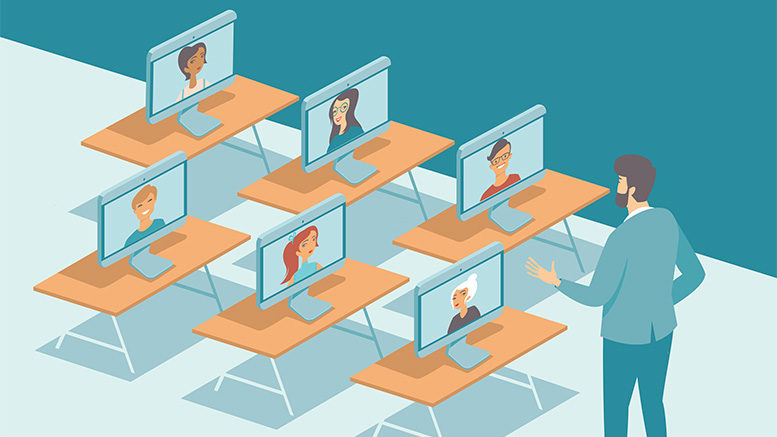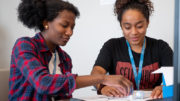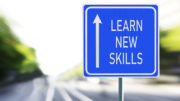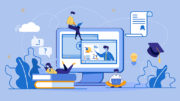The pandemic has brought greater awareness in communities and across the country about the myriad challenges that community colleges face, from access to technology to childcare. It has prompted many colleges to listen more carefully to students to determine their needs and to make improvements.
At this week’s 2020 Virtual ATE Conference, participants heard first-hand from a group of community college students on how to improve instruction, particularly during the pandemic. They were among 35 current two-year college students and recent graduates whose scientific posters about research or special academic projects were displayed during the conference.
The meeting marks the 27th year that the American Association of Community Colleges has hosted Advanced Technological Education (ATE) grantees with support from the National Science Foundation. And despite the conference being held virtually because of the pandemic, 1,050 people registered — surpassing 900 last year — and have participated in interactive remote sessions that have included panel discussions, technology demonstrations, video summaries of more than 250 funded projects and centers, and the student poster session.
‘Keep reaching out’
In the discussion moderated by Donald L. McCoy, a K-to-college STEM educational consultant, the students shared their COVID-related experiences and offered faculty advice for keeping students’ learning on track during the pandemic.
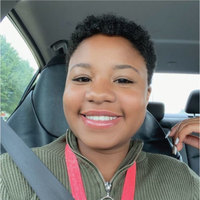
“It was very challenging in the beginning,” said Alexis White, a student in the IT Flexible Apprentice program at Columbus State Community College (Ohio). During spring semester, she had to deal with illnesses among relatives and close friends. White struggled a bit academically without in-person interactions with instructors, but she persisted to finish the semester “on a good note.”
This fall, White is enjoying the live, online sessions that one of her professors holds weekly to review material and take questions. She appreciates that he goes into elaborate detail when responding to questions to ensure that students understand.
White’s advice to faculty is: “Keep reaching out to students as much as possible.”
As an international student, Benjamin Abneri Nnko had to deal with an additional layer of uncertainty about whether he could stay in the U.S. when COVID precautions required online delivery of all his classes.
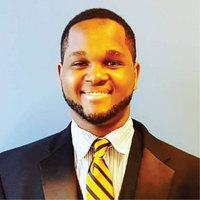
“School has been fantastic. They’ve done everything they can do to make the transition easy,” he said.
A 2018 graduate of Gateway Community College (Connecticut), Nnko is pursuing an electrical engineering degree at the University of Bridgeport (Connecticut) and hopes to pursue a career in power generation. His scientific poster shown at the conference details the prototype machine that he and Gateway classmates created; it combined additive and subtractive manufacturing and required coding in three software languages.
Nnko said he misses the hands-on lab experiences that are part of many STEM classes, but he encouraged faculty to create, when possible, “an interactive environment for students.”
Making adjustments
Sophia Ibargüen, a biology major at Pasadena City College (California), reported that professors of her fall courses — including organic chemistry — had adjusted the lab components of their courses to allow students to safely do assignments in their kitchens.
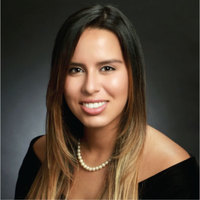
Ibargüen’s poster about “Curbing the Adverse Effects of Transitioning STEM Classes to Remote Format” highlighted a food lab, a dry lab and surveys designed to engage students. The poster is based on research she did during a virtual internship this summer when she worked remotely with people around the country on a collaboration to modify lab courses for remote delivery. The Micro Nano Technology Education Center, a new ATE center at Pasadena City College, is using the group’s research.
Ibargüen urged faculty and administrators to offer extracurricular activities like virtual undergraduate research experiences to help students boost their resumes and make them more competitive.
“It’s not going to be an easy transition, to be sure, but I’ve seen it can only benefit the students as well as the faculty in terms of their growth in virtual skills,” she said.
Starting on a second career
From a distance, it might seem that Jeff Robertson, a 20-year Coast Guard veteran, would not be fazed by COVID-19. But when schools and daycare centers closed in March, he was the adult left to watch four children — ranging in age from one to 11 — when his wife’s and his sister’s workplaces stayed open.
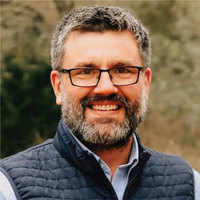
He acknowledged it was a struggle to keep up with the kids and his big course load at the University of North Georgia. In 2013, Robertson earned an associate degree from Bishop State Community College (Alabama) while serving in the Coast Guard.
The environmental and spatial analysis major said his desire for a second career that solves environmental problems was influenced by the NSF scientists he met while on Coast Guard duty in Antarctica. His conference poster shows the extensive research he has done in collaboration with a university professor and government scientists using geospatial modeling to identify probable locations of sinkholes.
Given the powerful motivation he’s experienced investigating environmental questions, Robertson suggested community college faculty give students authentic research opportunities or connect them with people working in the career fields that interest them.
“Find somebody (with whom) they can get on a project and see results from that project,” Robertson said.

